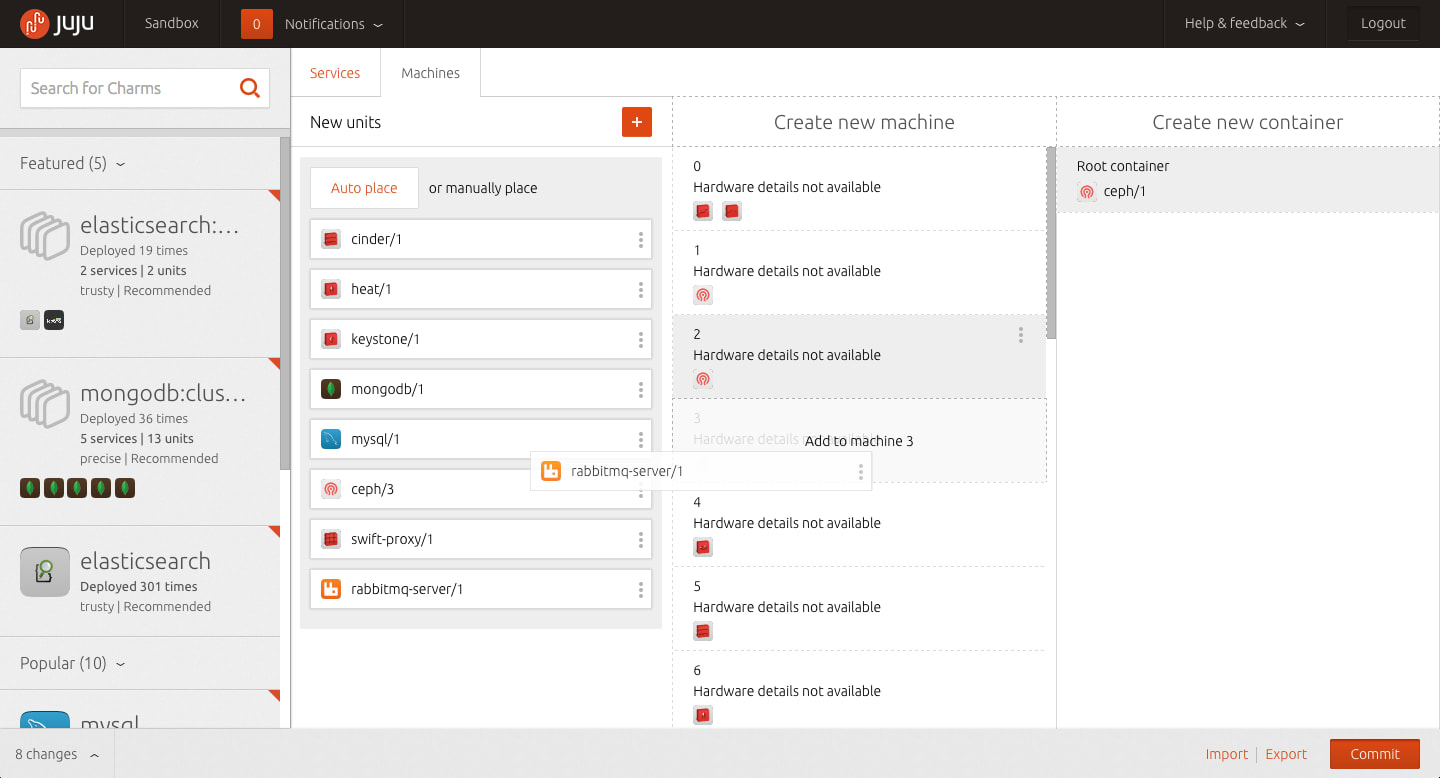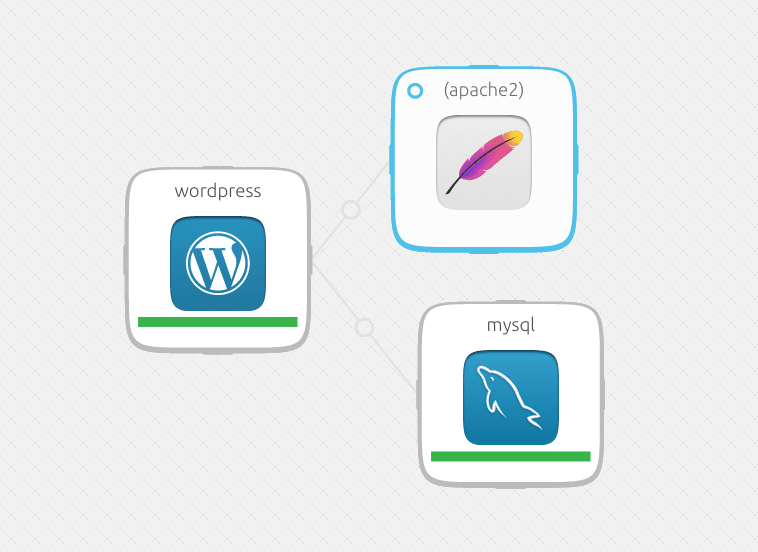Designing machine view
Luca Paulina
on 13 October 2014
Tags: Design
A few weeks ago we launched ‘Machine view’ for Juju, a feature designed to allow users to easily visualise and manage the machines running in their cloud environments. In this post I want to share with you some of the challenges we faced and the solutions we designed in the process of creating it.
A little bit about Juju…
For those of you that are unfamiliar with Juju, a brief introduction. Juju is a software tool that allows you to design, build and manage application services running in the cloud. You can use Juju through the command-line or via a GUI and our team is responsible for the user experience of Juju in the GUI.
First came ‘Service View’
In the past we have primarily focused on Juju’s ‘Service view’ – a virtual canvas that enables users to design and connect the components of their given cloud environment.
This view is fantastic for modelling the concept and relationships that define an application environment. However, for each component or service block, a user can have anything from one unit to hundreds or thousands of units, depending on the scale of the environment, and before machine view, units means machines.
The goal of machine view was to surface these units and enable users to visualise, manage and optimise their use of machines in the cloud.
‘Machine view’: design challenges
There were a number of challenges we needed to address in terms of layout and functionality:
- The scalability of the solution
- The glanceability of the data
- The ability to customise and sort the information
- The ability to easily place and move units
- The ability to track changes
- The ability to deploy easily to the cloud
I’ll briefly go into each one of these topics below.
Scalability: Environments can be made up of a couple of machines or thousands. This means that giving the user a clear, light and accessible layout was incredibly important – we had to make sure the design looked and worked great at both ends of the spectrum.
Glanceability: Users need simple comparative information to help choose the right machine at-a-glace. We designed and tested hundreds of different ways of displaying the same data and eventually ended up with an extremely cut back listing which was clean and balanced.
The ability to sort and customise: As it was possible and probable that users would scale environments to thousands of machines, we needed to provide the ability to sort and customise the views. Users can use the menus at the top of each column to hide information from view and customise the data they want visible at a glance. As users become more familiar with their machines they could turn off extra information for a denser view of their machines. Users are also given basic sorting options to help them find and explore their machines in different ways.
The ability to easily place and move units: Machine view is built around the concept of manual placement – the ability to co-locate (put more than one) items on a single machine or to define specific types of machines for specific tasks. (As opposed to automatic placement, where each unit is given a machine of the pre-determined specification). We wanted to enable users to create the most optimised machine configurations for their applications.
Drag and drop was a key interaction that we wanted to exploit for this interface because it would simplify the process of manually placing units by a significant amount. The three column layout aided the use of drag and drop, where users are able to pick up units that need placing on the left hand side and drag them to a machine in the middle column or a container in the third column. The headers also change to reveal drop zones allowing users to create new machines and containers in one fluid action keeping all of the primary interactions in view and accessible at all times.
The ability to track changes: We also wanted to expose the changes that were being made throughout user’s environments as they were going along and allow them to commit batches of changes altogether. Deciding which changes were exposed and the design of the uncommitted notification was difficult, we had to make sure the notifications were not viewed as repetitive, that they were identifiable and that it could be used throughout the interface.
The ability to deploy easily to the cloud: Before machine view it was impossible for someone to design their entire environment before sending it to the cloud. The deployment bar is a new ever present canvas element that rationalises all of the changes made into a neat listing, it is also where users can deploy or commit those changes. Look for more information about the deployment bar in another post.
We hope that machine view will really help Juju users by increasing the level of control and flexibility they have over their cloud infrastructure.
This project wouldn’t have been possible without the diligent help from the Juju GUI development team. Please take a look and let us know what you think. Find out more about Juju, Machine View or take it for a spin.
Talk to us today
Interested in running Ubuntu in your organisation?
Newsletter signup
Related posts
Open design: the opportunity design students didn’t know they were missing
What if you could work on real-world projects, shape cutting-edge technology, collaborate with developers across the world, make a meaningful impact with your...
Generating accessible color palettes for design systems … inspired by APCA!
This is the first of two blog posts about how we created the color palette for a new design system at Canonical. In this post I share my journey into...
How we ran a sprint to refresh our design website, Part 2
Part 2 of our series on how our team created content for our design website. Get insights, tools, and lessons to help you run your own design sprint.










